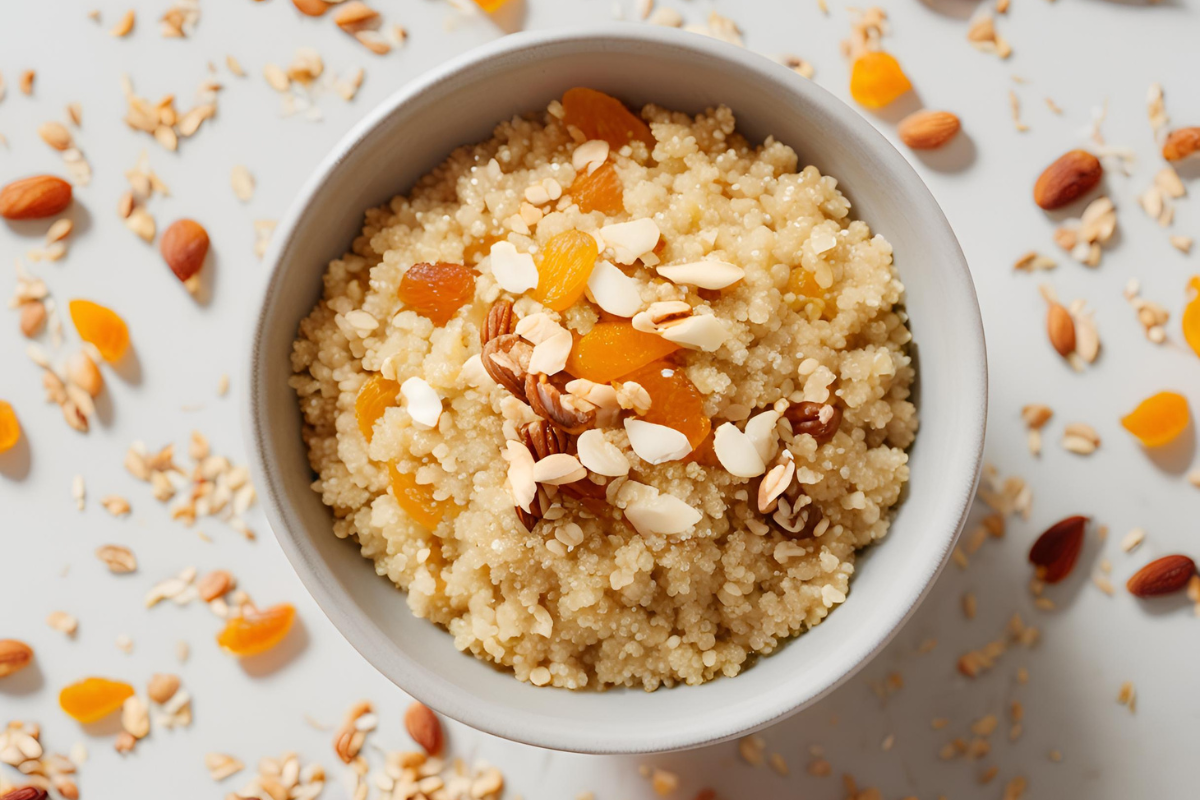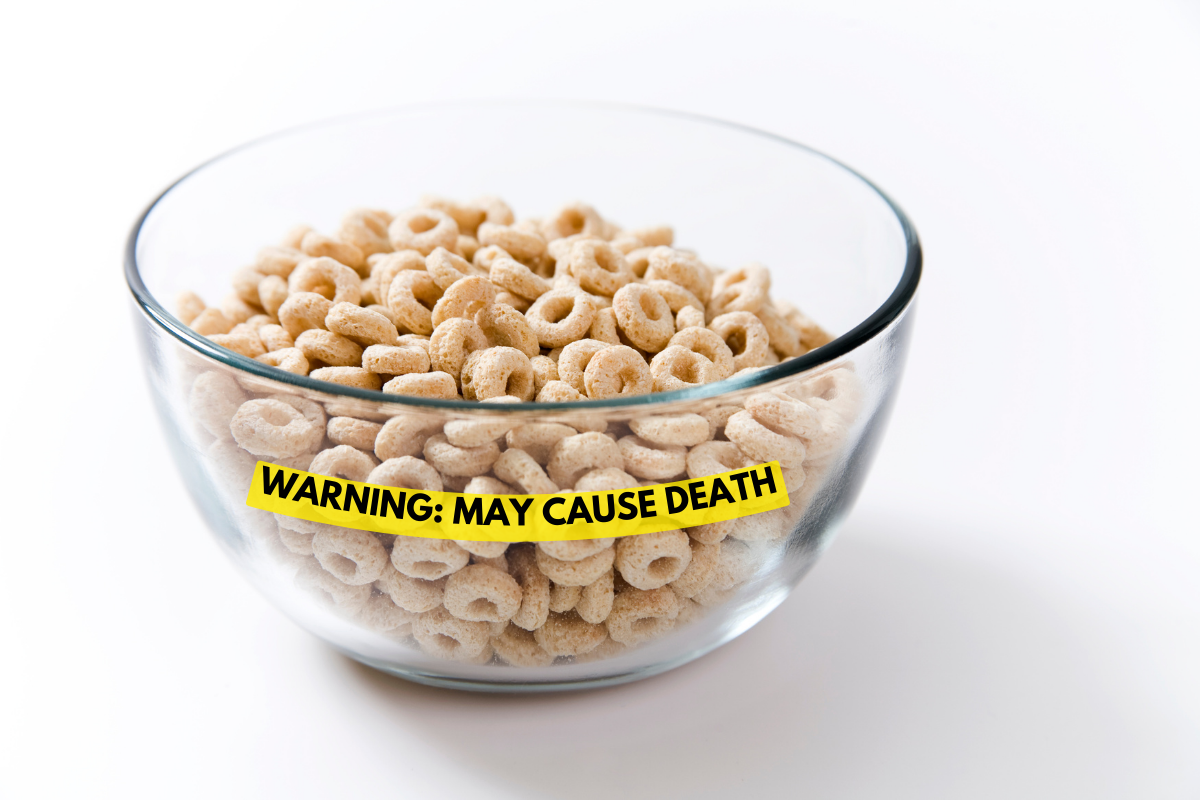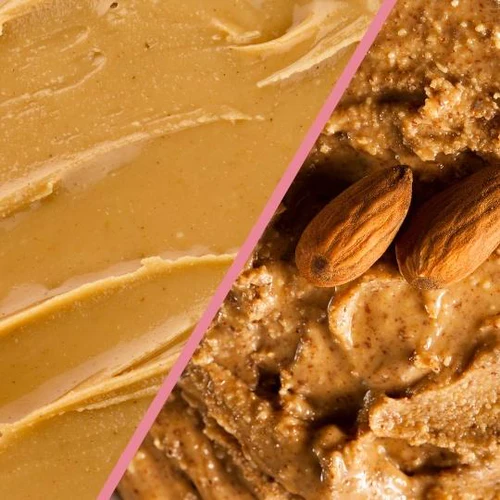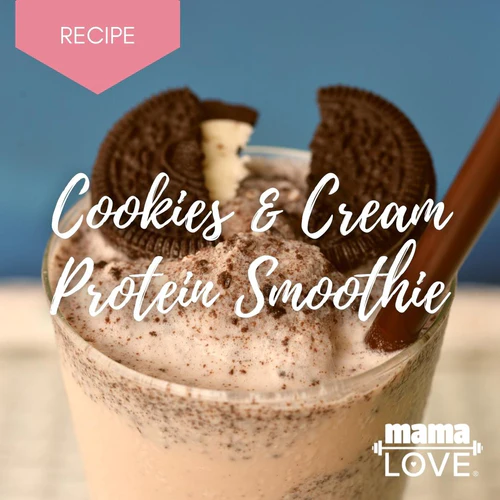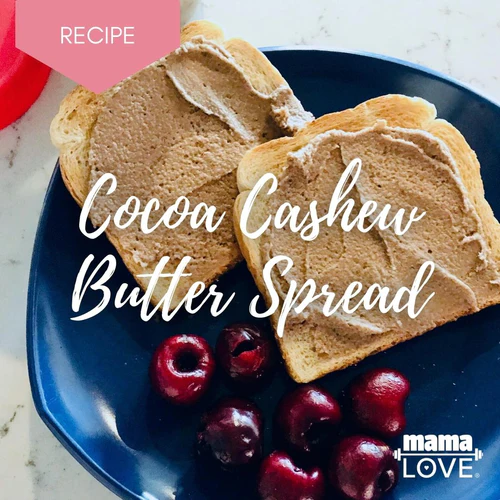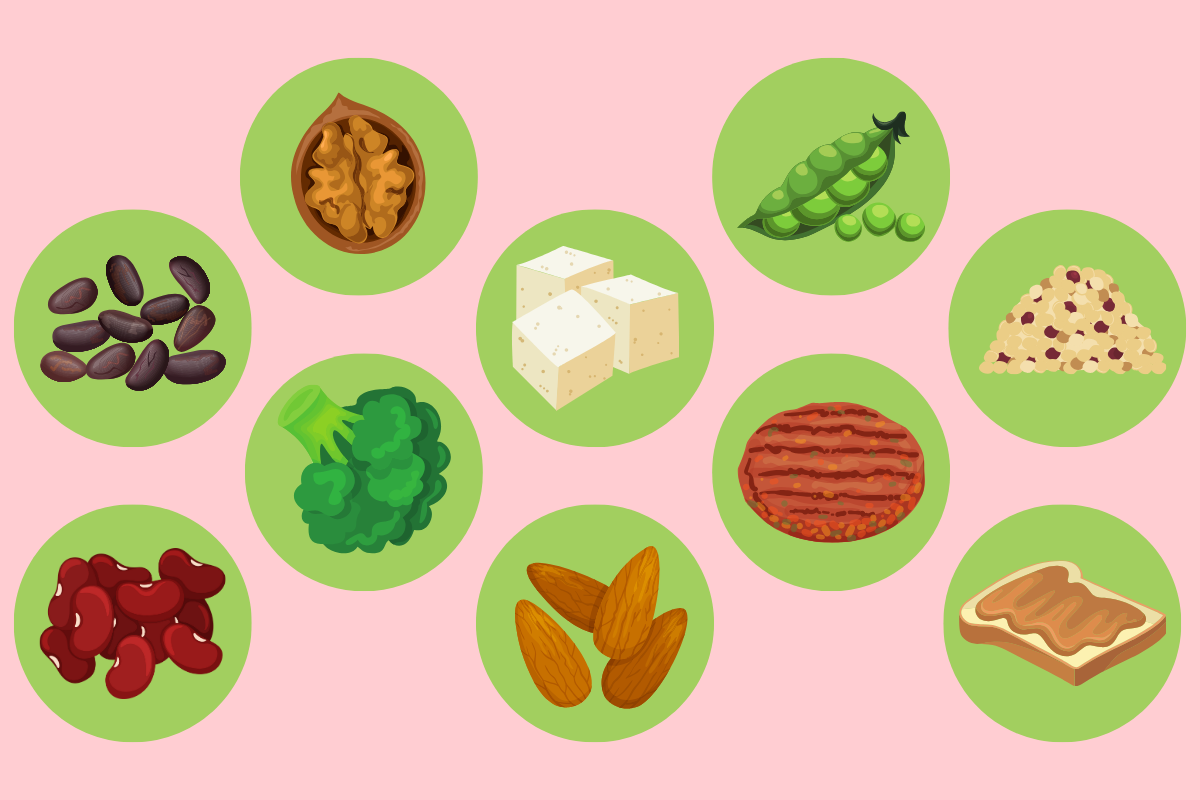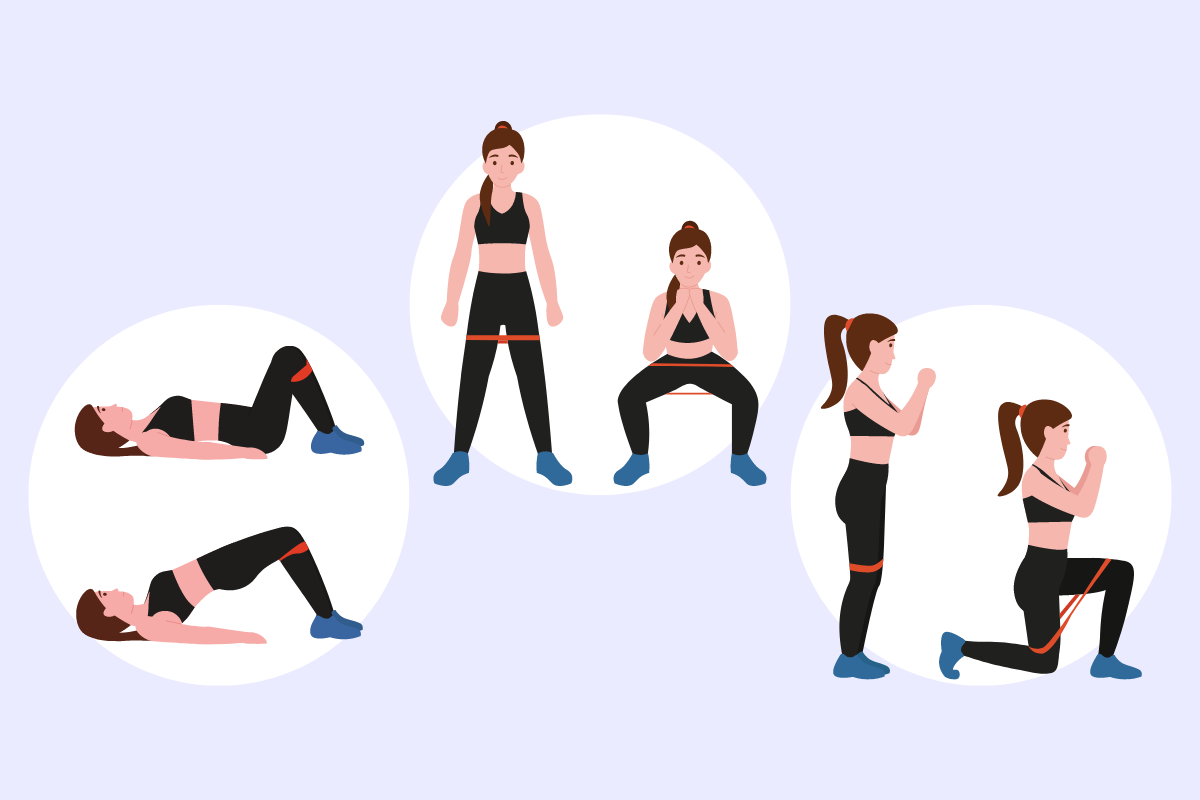
Have you ever found yourself staring at the nut butters in the grocery store, wondering why the almond butter costs around $2 more than the peanut butter? Only to flip to the back panels, compare the nutrition facts, and still feel like you don’t know which one’s the better buy? (I know I can’t be the only one…)
In a snack smack down, which nut butter would win the belt for healthiest: peanut butter or almond butter? Turns out, it’s pretty much a draw.
Nut Butters Are a Great Source of Protein
Nut butters are loaded with muscle-building protein—peanut butter boasts about 8 grams per serving, and almond butter clocks in around 7 grams. And while peanuts and almonds are calorie dense, they both provide sustained energy to fuel your workouts and daily life.
Still, not all nut butters are created equal. Light or “low-fat” versions, from brands like Skippy and Peter Pan, often pack a whopping punch of sugar (up to 11 grams* per serving!) and some of the regular ones still slip in partially hydrogenated oils.
Skip Spreads Made with Partially Hydrogenated Oil
Partially hydrogenated oil is regular oil (such as palm, soybean, canola, or sunflower) that has been chemically altered to remain solid at room temperature. This solidifying process turns otherwise healthy oils into trans fats, which are proven to raise cholesterol and increase risk of heart disease (1, 2).
Partially hydrogenated oil is used in nut butters as a coagulating ingredient—it keeps the natural nut oils from separating and rising to the top. And that thickening action doesn’t just happen inside of a jar, partially hydrogenated oil clogs up in your arteries, too—so it’s best to avoid it.
Most brands have tweaked their recipes to keep trans fats out of their nut butters, but you’ll still find palm oil on a lot of those labels.
Watch Out for Nut Butters with Palm Oil
What’s wrong with palm oil? Palm oil is solid at room temperature, and research is conflicted as to whether it’s healthy to consume. Some studies show it may protect brain function (3) and prevent strokes (4), while others suggest it may increase risk factors for heart disease (5, 6, 7).
Iffy health effects aside, the toll palm oil has on the environment is even more alarming. Companies use it because it’s cheap to grow and process, but expanding palm oil plantations are a major cause of deforestation, which contributes to global warming and species extinction (8).
Steering clear of palm oil and opting for nut butters with natural oil separation might be the smartest way to go, especially if you’re concerned about health. It’s a little more work up front to stir in the oil when you open the jar, but it might be better for your heart and the planet in the long run.
Nut Butters Have Healthy, Monounsaturated Fats
Should you be worried about that oil sitting on top? Not really. The fat found in natural peanut butter is monounsaturated—the heart-healthy kind, and a study in the Journal of the American Medical Association reports eating all-natural peanut butter could reduce your risk of developing type 2 diabetes (9). It’s also a great source of niacin, folic acid, and vitamin E.
Storage tip: After opening and stirring for the first time, keep your all-natural peanut and almond butters in the fridge. The chilly temp prevents the oils from separating again, cutting out all that extra spoon work later.
Almond Butter Beats Peanut Butter, Slightly
Almond butter has a leg up on peanut butter in the minerals department, offering more bone–building magnesium, calcium, and phosphorus, and more vitamin E. It also contains monounsaturated fat, and research published in the Journal of the American College of Nutrition shows munching almond butter can lower LDL cholesterol (the “bad” kind) and raise HDL cholesterol (the “good” kind) (10).
No matter which spread you choose, including nuts in your meals and snacks is great for your health, especially when it comes to your cardiovascular system. Studies show eating nuts can lower your risk of developing cardiovascular disease and coronary heart disease (11)
Bottom line: Whether you reach for a jar of all-natural peanut butter or almond butter, you’re making a healthy choice. Almond butter slightly edges out peanut butter because it has a bit more fiber and a few more micronutrients, but peanut butter is higher in protein, so it’s really a toss-up.
Mama Love Recipes with Peanut Butter
- Chocolate Peanut Butter Smoothie: Natural sweetness from Medjool dates pumps up the rich, chocolate flavor of Mama Love Chocolate Protein, and peanut butter gives the blend the irresistible creaminess you’d find inside of a two-cup pack of candy. Y to the U to the M—yum!
- Chocolate Peanut Butter Protein Bites: There’s a big handful of dark chocolate chips stirred into these fun-to-make, fun-to-eat protein bites, and I think you’re going to love them!
Mama Love Recipes with Almond Butter
- Almond Butter Bliss Smoothie: If you love almonds, you’re in for a real treat! This smoothie is turbo blasted with protein—perfect for a post-workout recovery snack.
- Cherry Almond Protein Balls: Cherries are a great source of antioxidants, anti-inflammatories, and melatonin. Oh, and the almond butter gives these balls an extra protein kick. Enjoy!
*11 grams of sugar is about 2.5 teaspoons. That’s a lot when you consider the recommended daily limit of added sugar is 6 teaspoons per day for women, and 9 teaspoons for men (12).
Sources:
- “Trans fat is double trouble for heart health.” The Mayo Clinic. February 2022. Accessed March 2, 2022.
- Oteng A, et al. “Mechanisms of action of trans fatty acids.” Advances in Nutrition. 2020; doi:10.1093/advances/nmz125.
- Sen, Chandan K et al. “Palm oil-derived natural vitamin E alpha-tocotrienol in brain health and disease.” Journal of the American College of Nutrition 29,3 Suppl (2010): 314S-323S. doi:10.1080/07315724.2010.10719846
- Gopalan, Yogheswaran et al. “Clinical investigation of the protective effects of palm vitamin E tocotrienols on brain white matter.” Stroke 45,5 (2014): 1422-8. doi:10.1161/STROKEAHA.113.004449
- Tholstrup, Tine et al. “Palm olein increases plasma cholesterol moderately compared with olive oil in healthy individuals.” The American journal of clinical nutrition 94,6 (2011): 1426-32. doi:10.3945/ajcn.111.018846
- Bautista, L E et al. “Effects of palm oil and dietary cholesterol on plasma lipoproteins: results from a dietary crossover trial in free-living subjects.” European journal of clinical nutrition 55,9 (2001): 748-54. doi: 10.1038/sj.ejcn.1601218
- Vega-López, Sonia et al. “Palm and partially hydrogenated soybean oils adversely alter lipoprotein profiles compared with soybean and canola oils in moderately hyperlipidemic subjects.” The American journal of clinical nutrition 84,1 (2006): 54-62. doi:10.1093/ajcn/84.1.54
- Vijay, Varsha et al. “The Impacts of Oil Palm on Recent Deforestation and Biodiversity Loss.” PloS one 11,7 e0159668. 27 Jul. 2016, doi: 10.1371/journal.pone.0159668
- Jiang, R., Et. Al. “Nut and Peanut Butter Consumption and Risk of Type 2 Diabetes in Women.” Journal of the American Medical Association. November 2002.
- Spiller, G. A., Miller, A., Et. Al. “Effects of plant-based diets high in raw or roasted almonds, or roasted almond butter on serum lipoproteins in humans.” Journal of the American College of Nutrition. June 2003.
- Guasch-Ferré, Marta et al. “Nut Consumption and Risk of Cardiovascular Disease.” Journal of the American College of Cardiology70,20 (2017): 2519-2532. doi: 10.1016/j.jacc.2017.09.035.
- “Added Sugars on the New Nutrition Facts Label.” U.S. Food & Drug Administration. February 2022. Accessed March 2, 2022.

